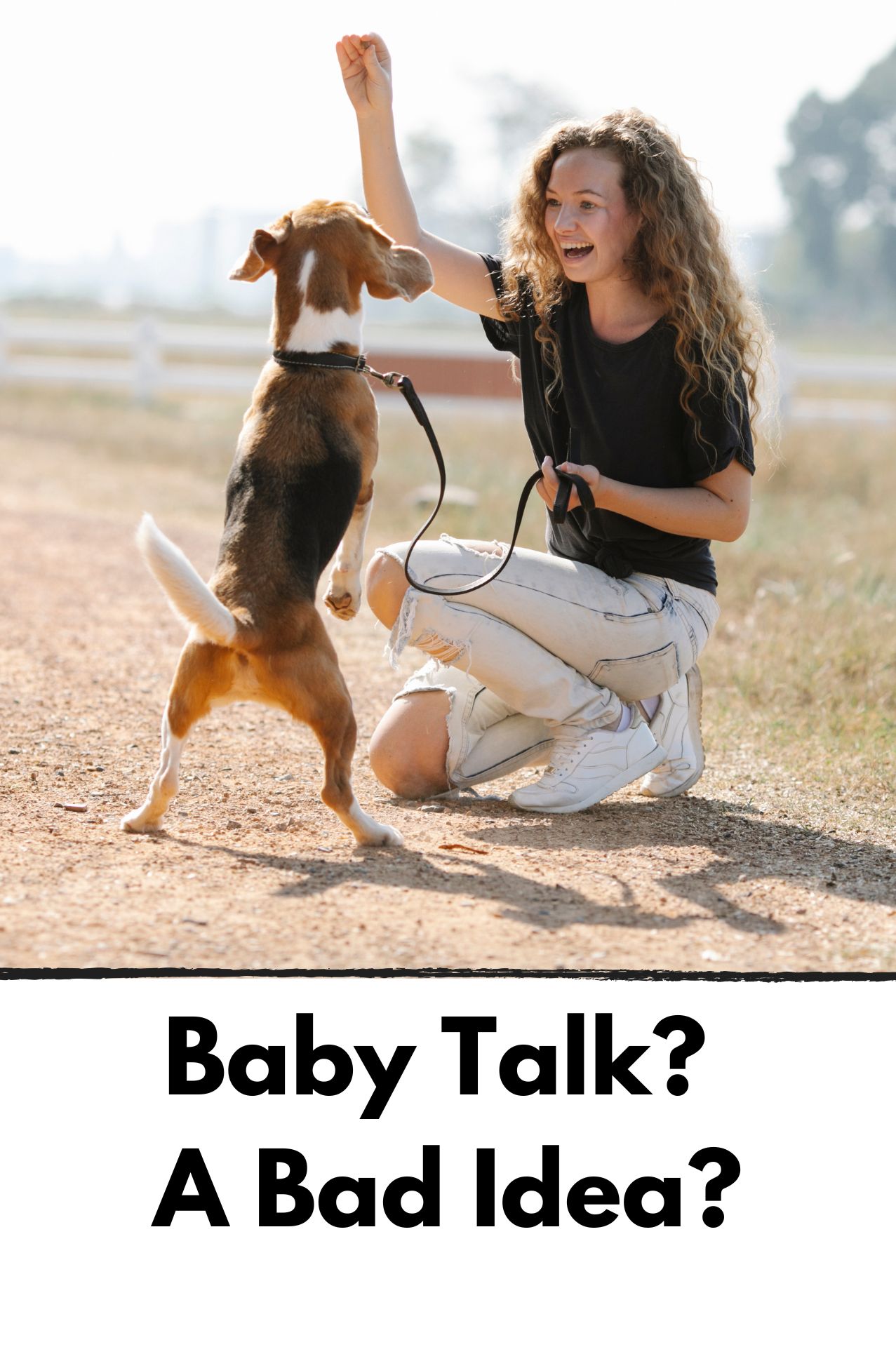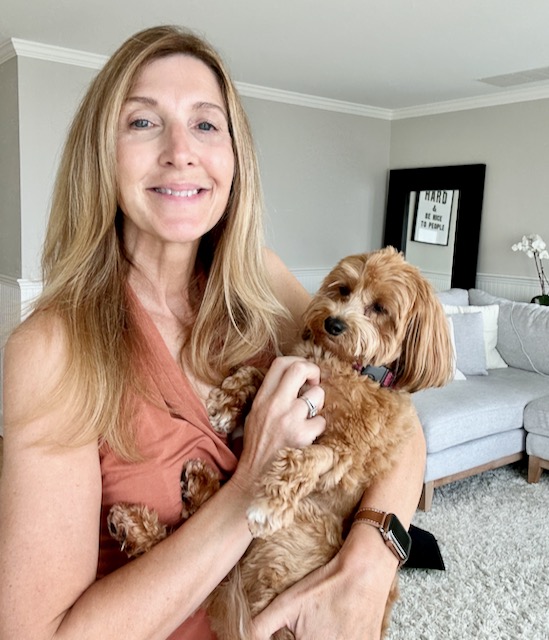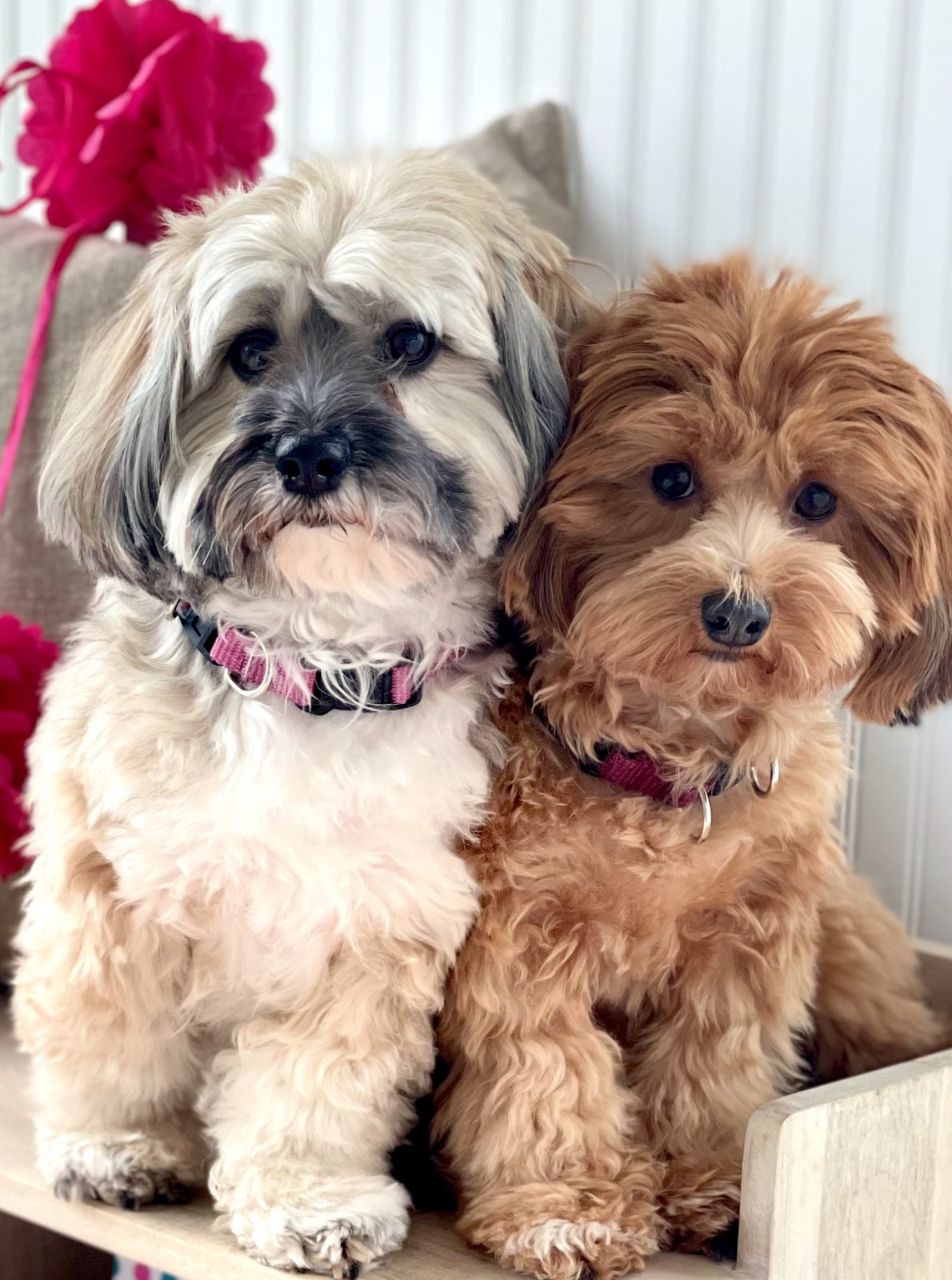
In this Small Bites article, we’ll look at how our own dog training voices (specifically, using baby talk with our small dogs) can significantly affect how our pups respond to us.
884 Words; 4 Minute Read.
The Bottom Line – It’s the Tone
Ever been guilty of an eye-roll when catching someone talking to their dog like a baby? 🙄 Well, brace yourself, because here’s the surprising truth—’baby talk’ might just be the key to leveling up your dog training game!
Embracing that cheerful, upbeat tone with a higher pitch can forge an unbreakable bond and supercharge your communication with your small pup. Discover the science behind this effective approach and transform your teaching sessions (and your relationship) with your little (furry) one.
Harness the Power of your “Dog Teaching Voice”
Understanding how to talk to our dogs effectively could be the key to unlocking the best training results. But more important, it may just build a better bond and a happier small dog.
That’s the takeaway from a recent article by Dr. Stanley Coren, a renowned psychologist whose column “Canine Corner” in Psychology Today’ is a must read. If you’ve read Downward Sizing Dog, you might remember his insights from Chapter Four: “Small Dogs Are Smart.”
Dr. Coren’s recent piece, aptly titled “Talk Nicely When Training Dogs. It Makes A Difference,” discusses a fascinating study examining the impact of the voices we use during training. The study, called “The Power of Discourse: Associations between Trainers’ Speech and the Responses of Socialized Wolves and Dogs to Training,” showed that the tone we use while training our dogs can dramatically affect their learning.
Study Highlights
According to the research conducted through cooperative work by universities in Brazil and Austria, enthusiastic, higher-pitched voices truly help. Highlights of this work include the following findings:
- Humans often use a special type of speech called pet-directed speech (PDS) when talking to dogs, which shares characteristics with infant-directed speech (IDS). I’m calling that “baby talk” here.
- Dogs show a preference for pet-directed speech
- Pet-directed speech serves a dual function: improving attention and fostering social connection with dogs.
- Positive Reinforcement Training (PRT) benefits dogs by improving their behavior and reducing stress levels.
- The duration/frequency of “nice” speech and high pitch (i.e., “baby talk”) is associated with positive behaviors in dogs during training, while negative speech leads to behaviors unrelated to training and increased distance in the interaction.
Baby Talk for the Win
If you’ve wondered, “Should I use baby talk with my dog?”, the answer is a resounding “yes!” Dog parents who adopt a friendly, pleasant tone, akin to baby talk, and slightly elevate their pitch can expect to see significantly improved immediate and long-term training results.
While we might not consciously use harsh tones with our pups, we’ve all come across dog parents who sound frustrated or even upset when asking their dog to behave. This negative energy can stifle our pups’ response. So, it’s incredibly important to be mindful of our dog training voice.
This revelation is hardly a surprise – after all, don’t we all respond better to kind words? So, even though I know you’re always gentle with your pups, consider experimenting with a higher, cheerful tone. Think of it as using “baby talk” with your dog for a week or two, and see the difference it makes!

What I’ve Learned from Talking Doglish
I first reported on this dog training voice study to my email newsletter subscribers about three months ago.
Since that time, I’ve consciously worked on using a much more light-hearted, excited voice with Phoebe and Scout.
Of course, in our house, we try to root ALL our interactions in calmness and kindness. (That’s so much easier to do now that all three human children are grown and out :).
However, I must confess, the idea of speaking in high-pitched tones didn’t come naturally to me. It’s a holdover from my big dog days when I strived for an authoritative and commanding voice. I suppose it’s also the former lawyer in me. Despite this, I did (nearly) always speak softly to Phoebe and Scout. They love hearing a “thank you” when they do as they’re told.
But for the past three months, I’ve tweaked the pitch of my “dog training voice.” The results?
- The girls have always been attentive to me (it’s one of the first skills I teach a pup), but with my baby talk voice, their response time is even more impressive.
- They DO seem happier and more playful when I engage them this way. Apparently, there’s such a thing as too calm, at least when it comes to our dog training voice.
- I still feel embarrassed using the voice…because it’s a rather irritating sound, at least to me. But it’s my job to communicate as best I can with my pups, and so I’m sticking with it. My slight and superficial discomfort is something I need to get over.
If you decide to experiment with your “dog training voice” and use “baby talk” with your dog, please share your experiences. It would be great to gather your insights and share them with our community!
You’ll Also Love
Leave a Reply
Your email address will not be published.




